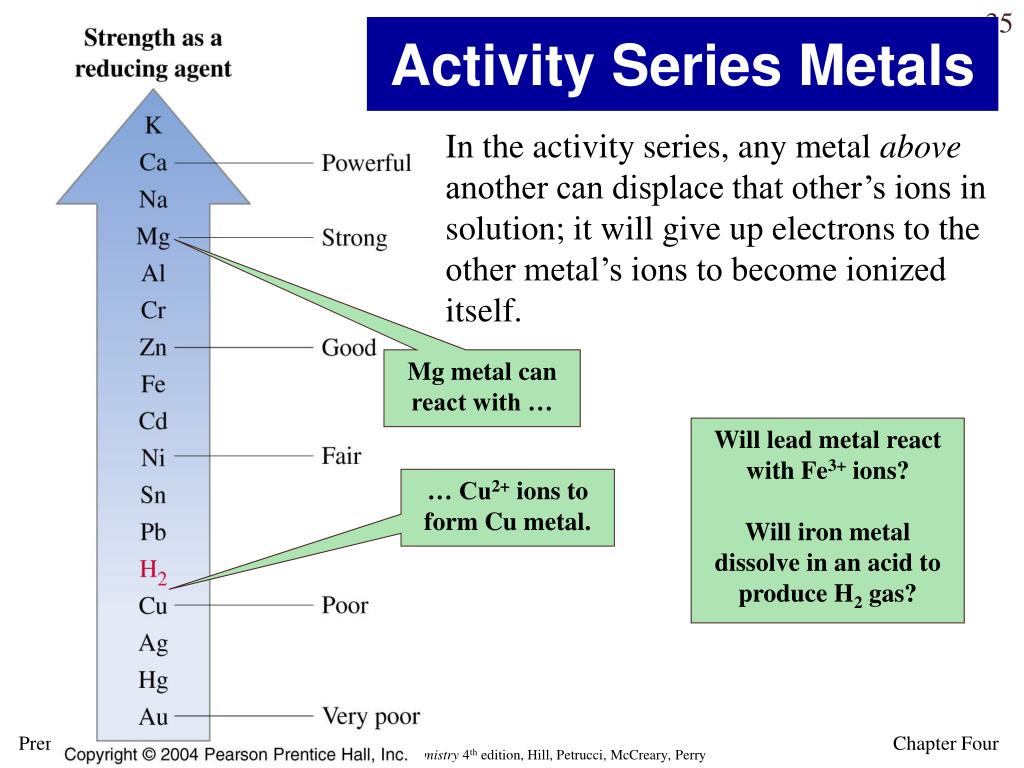

A real-life example of a single replacement reaction is the Statue of Liberty. It is also possible that a color change occurred upon the metals in the solutions that some researchers noticed that others did not. It is possible that while using the pipettes, the same exact amount of solution was not placed in each well as planned. Magnesium was the most reactive metal, reacting with two solutions. Zinc was somewhat reactive, reacting with one solution. The group found that aluminum and copper were not reactive at all with any of the solutions. The activity series is a list of metals in order from most active to least active from top to bottom therefore, for a single replacement reaction to occur, the lone metal should be higher in the activity series than the metal in the compound for a reaction to take place. In a single replacement reaction, the lone metal is more active than the metal in the compound. This experiment contradicted the researcher’s hypotheses that a reaction would occur between zinc nitrate and magnesium, and zinc nitrate and aluminum and that copper nitrate would react with aluminum. The experiment was completed using aluminum nitrate, copper nitrate, zinc nitrate, and magnesium nitrate to see what happened when aluminum, copper, zinc, and magnesium were placed in each solution. In this lab, the researchers found that magnesium is the most active metal and copper and aluminum are the least active metals. Build an activity series for the 7 metals used. Solution color change from blue to green, bubbles, magnesium broke down On data table 3 write complete and net equations for all those reactions that worked. Solution color change from blue to green, metal oxidized After five minutes, record your observations on the data table you made. Place the pieces in each row D well that contains the solution. Repeat the procedure from step 5 using 10cm of copper wire.Place a piece of zinc metal in each row C well that contains the solution. Use sandpaper to polish small strips of zinc metal.Place the ribbon in each row well that contains the solution. Repeat the procedure from step 5 using 10cm of magnesium ribbon.Place a piece of the aluminium wire in each row A well that contains the solution.Use scissors to cut the aluminium wire into four 2.5-cm pieces. AP Chemistry For DummiesCK-12 Chemistry - Second EditionChemistry-vol-IExploring General Chemistry in the LaboratoryWho. From these results, an activity series showing. With sandpaper, polish 10cm of aluminium wire until it is shiny. Purpose: To examine the reactions between 3 metals copper, magnesium and nickel, and 4 solutions.Repeat the procedure in step 1 to fill the four wells in column 4 with 2mL of 1.0M copper nitrate solution.

Repeat the procedure in step 1 to fill the four wells in column 3 with 2mL of 1.0M zinc nitrate solution.Repeat the procedure in step 1 to fill the four wells in column 2 with 2mL of 1.0M magnesium nitrate solution.Use a pipette to fill each of the four wells in column 1 of the reaction plate with 2mL of 1.0M aluminium nitrate solution.


 0 kommentar(er)
0 kommentar(er)
